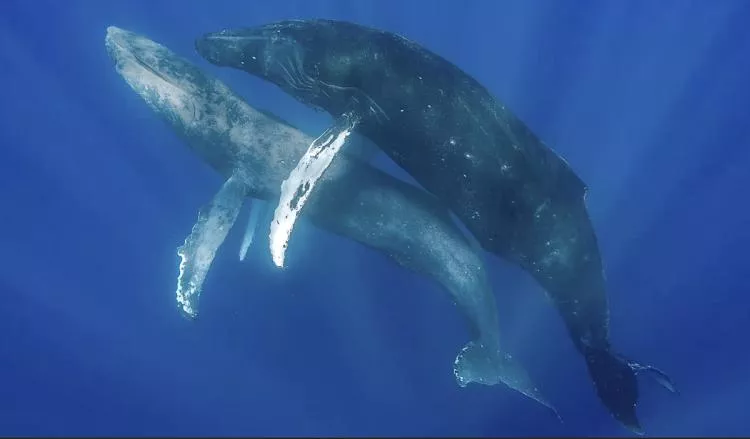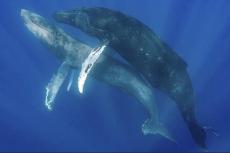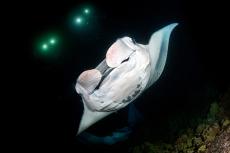Surprising Sexual Encounter Seen in Humpback Whales
Researchers in Hawaii have documented the first sighting of sex between humpback whales. Remarkably, it was an encounter between two males. Scientists have long puzzled over the mysteries of these majestic creatures, known for their intricate social structures. However, despite extensive research, reports of sexual encounters among humpback whales have remained elusive until now.
Lyle Krannichfeld and Brandi Romano observed two whales circling near their boat before joining in sexual activity about five metres below their vessel, off the Molokini crater near Maui. They were able to photograph them, providing an unprecedented glimpse into the intimate lives of these marine giants. Dr. Stephanie H. Stack, marine mammal researcher in Hawaii, published the observations in a study.
During the encounter, an emaciated whale covered in whale lice was pursued by a healthier counterpart. Despite its weakened state, the injured whale exhibited a series of interactions with the second whale, including repeated penetrations with his extruded penis, which is visible in the photograph below.
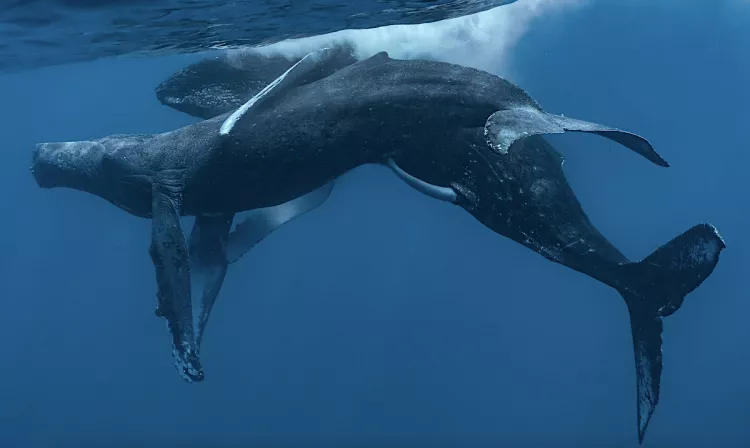
Humpback whales spend their summer months feasting in polar waters, then migrate to tropical regions, where they birth and pursue behaviours related to reproduction.
Why same-sex interactions?
While the exact motives behind the encounter remain unclear, researchers speculate that it could be linked to a variety of factors, including mating rituals, social bonding, or even dominance displays. The injured state of the first whale adds an additional layer of complexity to the observation, raising questions about the role of health and vulnerability in such interactions.
Same-gender affection and sex have been found throughout the animal kingdom, including in whales and dolphins. However, such observations were suppressed until recently because they contradict the doctrines of the major Western religions. Christianity, Judaism, and Islam, as well as others, hold that sex is for reproduction only and that same-sex interaction is morally wrong.
Scientific studies seem to indicate that this behaviour is neither due to sexual frustration nor the lack of available mates of the opposite sex. It seems to be the choice of those concerned and, at times, seems motivated by the desire for comfort and pleasure.
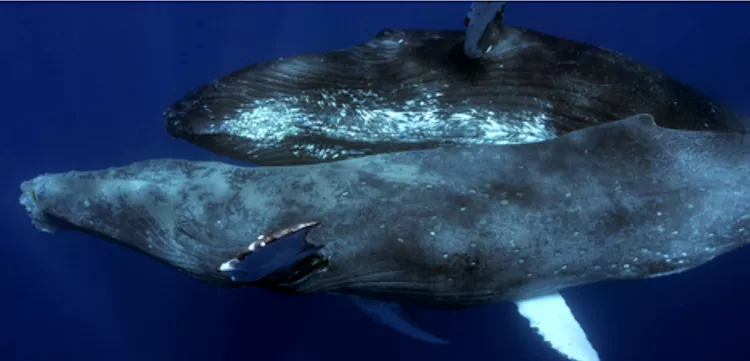
Such behaviour presents in a variety of ways in different species among both males and females, and in some cases, has been linked to improving the chances of successful reproduction. In geese, for example, families with two fathers are better able to defend the territory and the offspring from danger than those with one father. In ducks, same-sex behaviours appear to reinforce the bonds between the males in the flock, which is of vital importance in defending the hens and juveniles in this heavily predated species.s.
Given the prevalence of the territorial instinct across the animal kingdom, strengthening male bonding could help to explain how widespread same-gender sexual behaviour is. In some cases, it has become part of the established culture, meaning that it is learned by the offspring from the adults as they grow up. An example is the Japanese macaque society.
Community involvement in science
The observation of same-sex behaviour in humpback whales not only adds to our knowledge of humpback whale behaviour but also underscores the importance of community involvement in scientific research. As marine enthusiasts and scientists alike come together to unravel the mysteries of the ocean, each new revelation brings us one step closer to understanding the captivating world beneath the waves. Stay tuned as researchers dive deeper into the secrets of humpback whale society, unlocking new revelations with every discovery.


